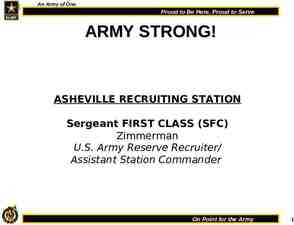Balanced and Unbalanced Forces
21 Slides611.50 KB
Balanced and Unbalanced Forces
What is a force? A force is a push or pull that causes an object to move, stop, or change direction In physics a force is anything that makes an object accelerate
Force Forces come in pairs Forces have a magnitude and a direction 5N, north (up) Magnitude: 5N Direction: north (up) 1 N (Newton) 1 kg * m/s/s
Balanced and Unbalanced Forces Forces occur in pairs and they can be either balanced or unbalanced
Balanced Forces Balanced forces do not cause change in motion They are equal in size and opposite in direction
Unbalanced Forces An unbalanced force always causes a change in motion When unbalanced forces act in opposite directions you can find the net force Net force Magnitude The difference between the two forces Direction Direction of the largest force
Unbalanced Forces 3 N, right – 6 N, left 3N, left
Unbalanced Forces 4 N, left – 10 N, right 6N, right
Unbalanced Forces 5 N, right 10 N, right 15N, right
Video Quiz- (6 Questions) 1. The Scientist who devised the 3 laws of motion was: A) Isaac Newton B) Albert Einstein C) Charles Darwin D) Thomas Edison
Video Quiz 2. The first law of motion states that if all the forces acting upon an object are BALANCED, then there will be: A) acceleration B) the object stopping C) no acceleration D) deceleration
Video Quiz 3. No acceleration means: A) increasing velocity OR the object is stationary B) constant velocity OR the object is stationary C) decreasing velocity OR the object is stationary
Video Quiz 4. The size of the force of gravity is an object's: A) density B) mass C) weight D) chemical structure
Video Quiz 5. When forces are BALANCED on an object, the object will either: A) decelerate OR accelerate B) start moving OR decelerate C) stop moving OR travel at a constant velocity D) remain stationary OR travel at a constant velocity
Video Quiz 6. When forces are UNBALANCED on an object, the object will either: A) remain stationary OR travel at a constant velocity B) accelerate OR decelerate C) start moving OR travel at a constant velocity D) stop moving OR travel at a constant velocity
Video Quiz- (6 Questions) 1. The Scientist who devised the 3 laws of motion was: A) Isaac Newton B) Albert Einstein C) Charles Darwin D) Thomas Edison
Video Quiz 2. The first law of motion states that if all the forces acting upon an object are BALANCED, then there will be: A) acceleration B) the object stopping C) no acceleration D) deceleration
Video Quiz 3. No acceleration means: A) increasing velocity OR the object is stationary B) constant velocity OR the object is stationary C) decreasing velocity OR the object is stationary
Video Quiz 4. The size of the force of gravity is an object's: A) density B) mass C) weight D) chemical structure
Video Quiz 5. When forces are BALANCED on an object, the object will either: A) decelerate OR accelerate B) start moving OR decelerate C) stop moving OR travel at a constant velocity D) remain stationary OR travel at a constant velocity
Video Quiz 6. When forces are UNBALANCED on an object, the object will either: A) remain stationary OR travel at a constant velocity B) accelerate OR decelerate C) start moving OR travel at a constant velocity D) stop moving OR travel at a constant velocity


























